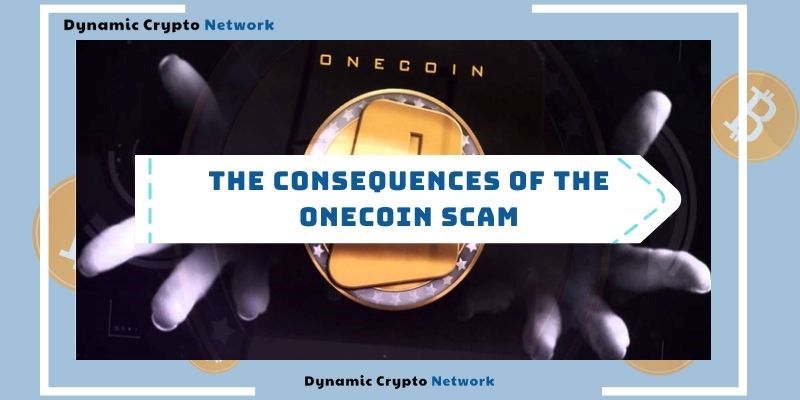OneCoin, once touted as “a cryptocurrency better than Bitcoin,” has emerged as one of the largest financial scams in history. From its promising beginnings to the mysterious disappearance of its founder, the OneCoin Scam saga is shocking and serves as a crucial lesson for investors.
What is OneCoin?
OneCoin is a fraudulent scheme based on Ponzi and pyramid models, promoted by OneCoin Ltd (Dubai) and OneLife Network Ltd (Belize). Both companies were established by Ruja Ignatova, who has become one of the most controversial figures in the cryptocurrency world.
Marketed as a cryptocurrency offering high returns and unique investment opportunities, OneCoin ultimately held no real value and lacked any underlying blockchain to support transactions. The revenue primarily stemmed from selling training packages rather than from actual development and trading on legitimate exchanges.
The OneCoin Scam
In the rapidly evolving landscape of blockchain technology and cryptocurrency, the OneCoin scandal became one of the biggest financial controversies of modern times. Launched in late 2014 by Dr. Ruja Ignatova, OneCoin was touted as a “better alternative to Bitcoin,” attracting millions of investors with promises of massive profits. However, it was essentially a Ponzi scheme built on a foundation of opacity and deception.
A Promising Start that Captivated Investors
OneCoin was introduced as a revolutionary solution to global financial systems. With claims of secure transactions, user-friendliness, and high value, it captured the attention of many investors. At one point, its market capitalization even reached over 50% of Bitcoin’s, signaling intense public interest. However, this impressive facade lacked any genuine substance.
Lack of Transparency and Unrealistic Promotions
Although advertised as having a complete cryptocurrency ecosystem, OneCoin did not have a legitimate blockchain. Investors were unable to trade this coin on any real exchanges, and its value existed solely within a closed system, creating a highly risky and opaque environment. The funds generated primarily came from selling training packages, which many analysts argue were merely a method of profiting off the very investors themselves.
The Disappearance of Ruja Ignatova
In 2017, as allegations of fraud mounted and authorities began investigations, Ruja Ignatova vanished without a trace. Her sudden departure raised suspicions and confusion among investors, amplifying doubts about the legitimacy of OneCoin and leaving many feeling severely deceived.
The Consequences of the OneCoin Scam
It is estimated that the OneCoin scam defrauded between $4 billion and $15 billion, impacting millions of people worldwide. The victims included wealthy investors and those from disadvantaged backgrounds who hoped for a life-changing opportunity through a product they believed to be valuable. Their stories have been highlighted in podcasts and media reports, underscoring the diverse and severe nature of this scam.
Victims like Jen McAdam decided not only to endure their losses but also to help expose the truth about OneCoin. They collaborated with authorities and media to raise awareness about cryptocurrency fraud. Jen McAdam has become a significant voice in advocating for other victims and seeking justice for those deceived.
The current whereabouts of Ruja Ignatova remain a mystery. Dubbed the “missing crypto queen,” many continue to search for clues about her whereabouts. The OneCoin scam serves as a cautionary tale about investment risks and illustrates the psychological manipulation employed to attract investors.
Lessons Learned from the OneCoin Scam
The OneCoin scandal has imparted important lessons to the investment community. First, transparency is crucial in any project. Investors should be cautious and thoroughly examine information related to the project, especially its technology and business model.
When faced with promises of extraordinarily high returns, it is essential to scrutinize them seriously. Often, attractive promises indicate abnormalities and a lack of realism.
Additionally, the credibility and experience of the project’s founders play a vital role. A trustworthy founder typically instills confidence in investors.
It is also essential to identify business models that show signs of pyramid schemes. These models often carry high risks and can lead to significant losses for investors.
Seeking advice from experts is also a prudent step. They can provide valuable insights and experiences, helping investors make more informed decisions.
Finally, the stories of the victims in this scam highlight the power of collaboration in seeking justice. They have united to raise awareness about fraud, thereby protecting their rights and those of others.
The OneCoin scam stands as a stark reminder of the potential pitfalls in the cryptocurrency market. While the allure of high returns can be tempting, it is essential for investors to conduct thorough research and exercise caution. By learning from the mistakes of the past, individuals can better navigate the complexities of the digital finance landscape.
Follow Dynamic Crypto Network for more!




